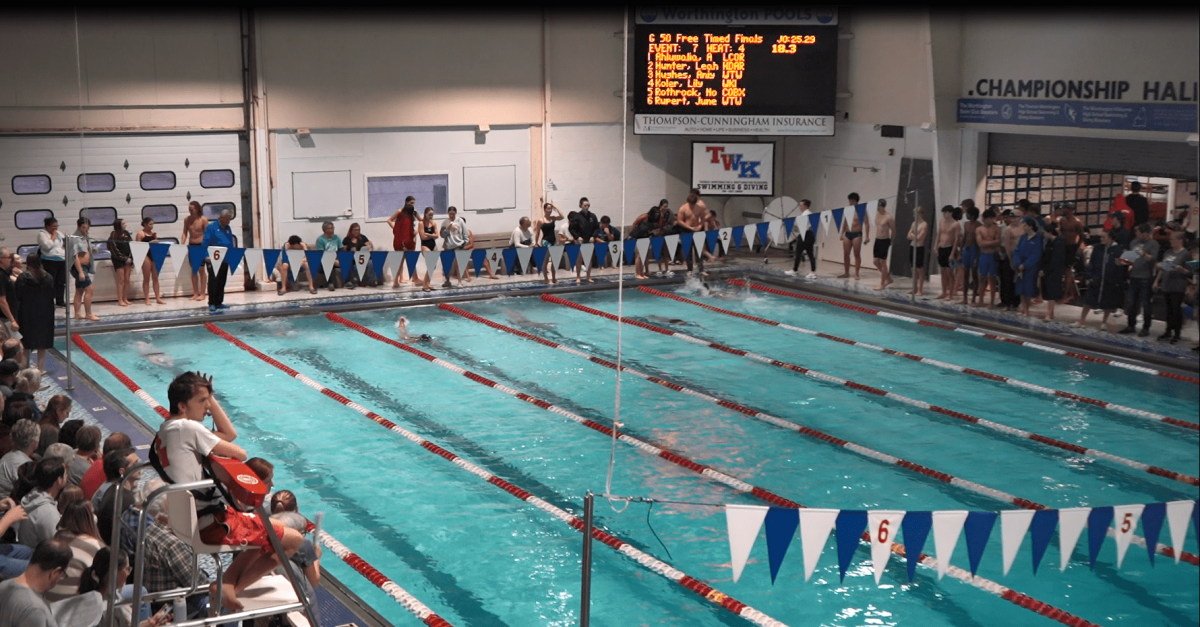Students at Westerville North High School are having difficulties finishing their lunch before the end of the period. Due to the high number of students enrolled at North, it can take up to half of the lunch period for students to get through the lunch line.
At first glance, it may seem that these issues have been caused by overcrowding in the lunchroom. However, after looking deeper, it seems that the length of each lunch period is what is causing these problems.
According to Stephanie McGeorge, one of the assistant principals at Westerville North, it was predicted that around 1,470 students would be enrolled at North this year, however, the true number was 1,613 enrolled students. This number is higher than the amount of students in the other high schools within the Westerville City Schools District this year. The increase in students this year could make the lunchroom seem more crowded to students than it was in past school years.

There are currently a total of 63 tables in the lunchroom, and these tables can fit about 12 people comfortably. This means approximately 756 students can be put in the lunchroom at once. Sixth period lunch, which has the highest number of students out of all three lunch periods, has 593 students. Although it can seem crowded, it is not nearing the number of students that can potentially fit in the lunchroom.
“I wouldn’t say it’s overcrowded,” McGeorge said. “We haven’t reached capacity.” Despite the fact that the capacity hasn’t been reached in any of the lunch periods, students are still having trouble finishing their lunches.
The CDC recommends schools give students “at least 20 minutes once they are seated (seat time) to enjoy their meal and socialize”. This does not include the time it takes for students to get their lunch. This is why we currently have lunch periods that are only 30 minutes long. Some students, especially those in sixth lunch, don’t think that this is enough time for them to finish their lunch.
Hallie Williamson (2026) is a student at North who has sixth period lunch. “30 minutes feels really rushed,” Williamson said. “Nobody has enough time to finish [their] food.”
With how little time students have to eat their lunch, they are often unable to finish. The leftover food that students were unable to finish becomes food waste in landfills. According to the Nevada Independent, “schools waste approximately 530,000 tons of food annually.” Increasing the amount of time students have to eat their lunch would reduce the amount of food waste that comes from schools.
“I find myself not always having enough time to eat because waiting in the lunch line takes over half the period,” Izzy Farrow (2026), a student with sixth period lunch said.
Extending the lunch periods could be one possible solution but would also come with its own share of issues; the school day would likely have to be longer as well to fit in longer lunch periods. Another possible solution would be to schedule equal amounts of students in each lunch period, seeing as there is a difference between how many students are in fourth and eighth lunch compared to sixth lunch.
Sixth period lunch’s high number of students may be attributed to the fact that, unlike the other two lunch periods, there are no study halls that take place during sixth period lunch. Another notable factor is return time for career center students. Students who take classes at career centers for part of their school day often come back around sixth period. Unfortunately, these factors can make it difficult for the school counselors and administrators to schedule equal amounts of students into each lunch period.
Changes would need to be made to alter how long lunch periods last at WNHS and potentially fix the issues that students are facing.































